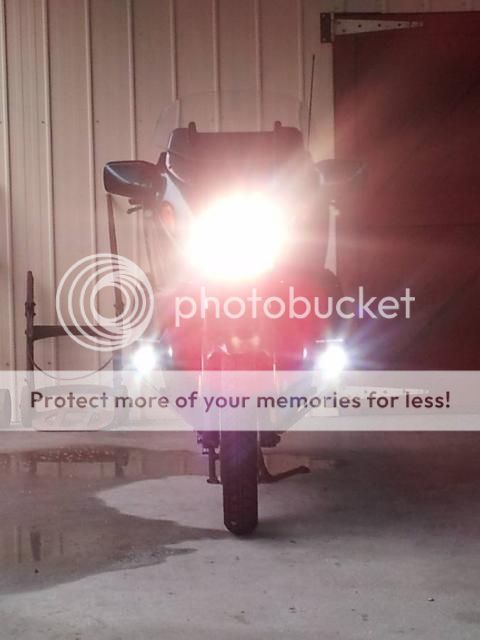grant81rs wrote:Gidday Fellas,
Major I may have been a little eager in my earlier explanation.
OK so after reading and trolling through different "K1100" forums earlier in the year, I was told by a good few owners that an excellent upgrade is one of a new headlight relay from the link I mentioned earlier, gives a more direct and stronger power source? see link
http://www.easternbeaver.com/Main/Wirin ... _kits.html
Now I am not one for electrical discussion, I don't fully understand the stuff apart from the fact the it costs me shit loads every 3 months and the farking kiddies don't help by leaving every light on in the house and having every bloody powerpoint running some sort of charger out of it.

Anyway I had the auto electrician wire up the spots and install the new relay and yes to me the original globe looked a little brighter once we turned it back on after having installed it and the sparky agreed to but he may well of just said that to be polite

but he also said it was a good thing to good after 20 years.
I always thought Eastern Beaver made some nice kits, and they've gotten better over the years. They have all the parts, a lot of the work done and they cover some bases that might not occur to the first timer.
3 downsides:
1) they are expensive. You can build your own for a small fraction of the price. USD10 or so. That said, I don't doubt the quality of the EB stuff and for what they put into a low volume product, I can't question their price overmuch.
2)They are not as efficient as they could be. You can get waaay into overkill with your own design, not to mention better wire.
3) You don't understand the circuit as thoroughly as you might if you built your own. This matters if you have to do a repair in the middle of the night far from home and 'net resources and many years from the original install when what you knew of it has been forgotten.
I put a priority on this last one. I forget what I did---but I know how the circuit works so it's easy enough to look it over and understand what does what. it's a simple circuit and one used in critical places like the starter. Worth knowing cold.
A relay and some big dedicated wire is always good for better light output and longer switch life*. The additional fusing is excellent protection and is handy for Dx. installing without disturbing the bikes original harness is simple. You bring your relay control ritht off the headlight socket with ordinary auto spade terminals and then have a new headlamp socket for the relay output back to the bulb. I like the older type side wired H4 sockets rather than the back wired type. More compact. I also like completely sealed (potted) relays. Get a replacement anywhere sealed or otherwise. Avoid specialized anything. I don't like relay sockets. Quick to replace a relay for sure, but hard to keep clean and corrosion free. posilock connections are cute--if you're selling the bike. Crimps, waterproof crimps or solder are good for as long as you own the machine and as far as you ride. I've had everything else get flakey at some point.
I run my horn on a relay too. Same reasons. It also ensures I always have a spare on hand should a headlight relay go out at night. Hasn't happened since I changed to sealed type. But I can limp to some truck stop at night without the horn. It also backs up my starter relay.
I use marine wire. Short lengths are cheap from the scrap bin at marine places (it is sold bulk off big spools). The stuff has a really good jacket--tougher and more flame resistant than auto wire. Good flexibility. I use 10ga for my main power feeds to my relays. No voltage drop and way over the fuse ratings. It's overbuilt but the performance is is as good as it can be and the failure points pretty much eliminated.
* sometimes a low draw through a switch can be problematic. If the switch is kept clean, no problems.



but he also said it was a good thing to good after 20 years.

